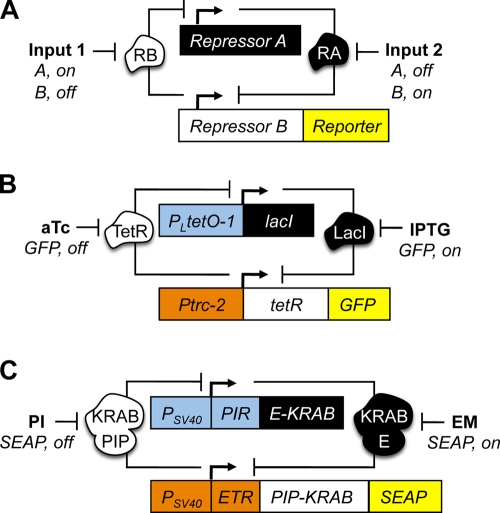Figure 1.
Synthetic genetic toggle switches. (A) A genetic toggle switch comprised of two genes (Repressor A and Repressor B) encoding repressor proteins (RA and RB) uses a mutual repression motif to achieve bistability. Transient exposure to Input 1 inhibits RB and switches the system’s stable state to Repressor A expression. Input 2 inhibits RA and activates Repressor B and a detectable output (Reporter). (B) Stable GFP output from a synthetic prokaryotic toggle switch is activated by isopropyl-β-d-thiogalactopyranoside (IPTG) and deactivated by anhydrotetracycline (aTc; Gardner et al., 2000). The LacI and TetR repressor proteins bind the Ptrc-2 and PLtetO-1 promoters, respectively. (C) In the mammalian toggle switch, secreted alkaline phosphatase (SEAP) output is activated erythromycin (EM) and deactivated by pristinamycin I (PI; Kramer et al., 2004). Repressor proteins, containing the KRAB (Kruppel-associated box) transcription repression domain fused with either the pristinamycin-induced transcription regulator protein (PIP) or the macrolide responsive MphR(A) protein (E) bind to promoters containing a simian virus 40 region (PSV40) and target sequences for PIP (PIR) or E (ETR).

